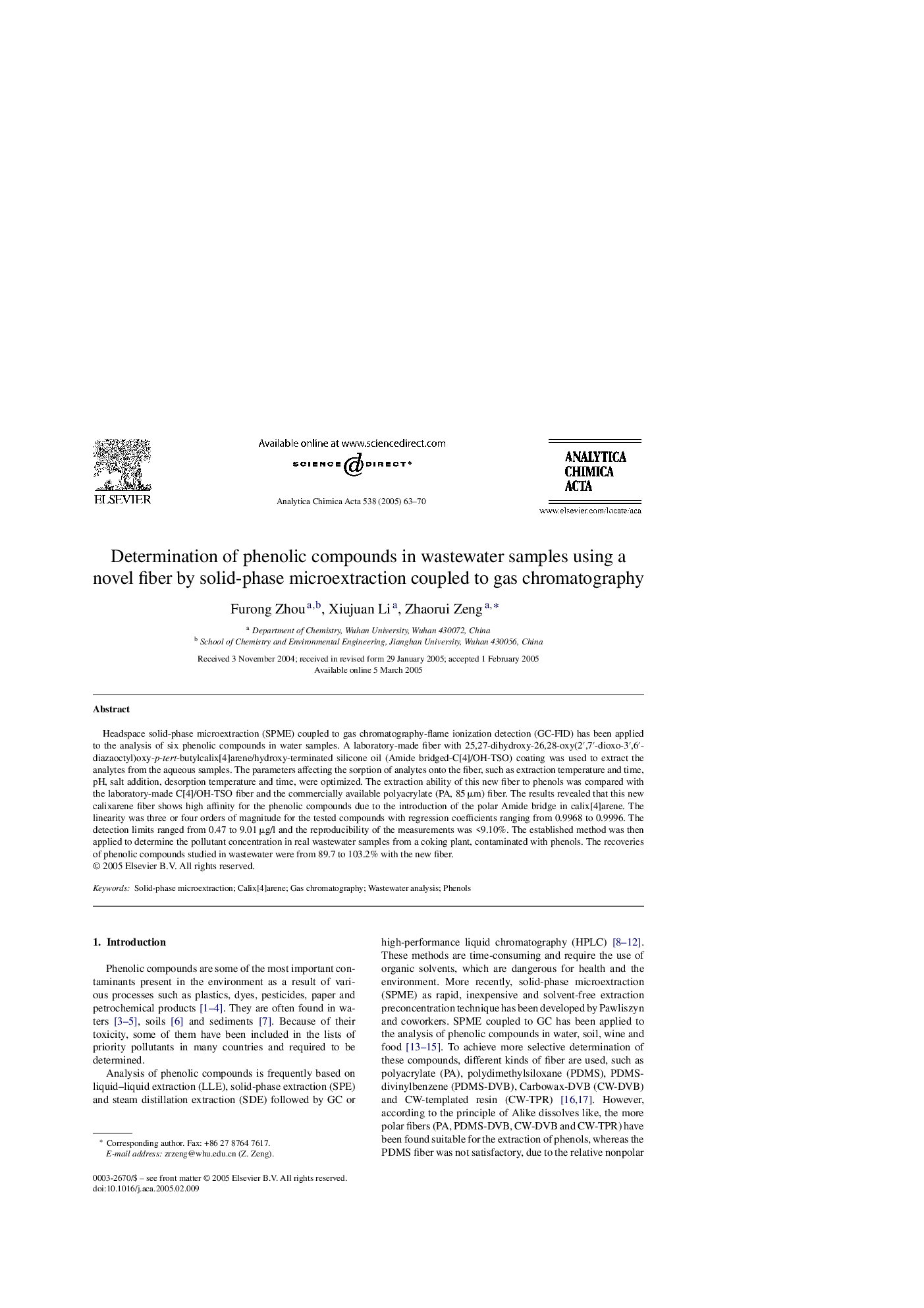| Article ID | Journal | Published Year | Pages | File Type |
|---|---|---|---|---|
| 9743720 | Analytica Chimica Acta | 2005 | 8 Pages |
Abstract
Headspace solid-phase microextraction (SPME) coupled to gas chromatography-flame ionization detection (GC-FID) has been applied to the analysis of six phenolic compounds in water samples. A laboratory-made fiber with 25,27-dihydroxy-26,28-oxy(2â²,7â²-dioxo-3â²,6â²-diazaoctyl)oxy-p-tert-butylcalix[4]arene/hydroxy-terminated silicone oil (Amide bridged-C[4]/OH-TSO) coating was used to extract the analytes from the aqueous samples. The parameters affecting the sorption of analytes onto the fiber, such as extraction temperature and time, pH, salt addition, desorption temperature and time, were optimized. The extraction ability of this new fiber to phenols was compared with the laboratory-made C[4]/OH-TSO fiber and the commercially available polyacrylate (PA, 85 μm) fiber. The results revealed that this new calixarene fiber shows high affinity for the phenolic compounds due to the introduction of the polar Amide bridge in calix[4]arene. The linearity was three or four orders of magnitude for the tested compounds with regression coefficients ranging from 0.9968 to 0.9996. The detection limits ranged from 0.47 to 9.01 μg/l and the reproducibility of the measurements was <9.10%. The established method was then applied to determine the pollutant concentration in real wastewater samples from a coking plant, contaminated with phenols. The recoveries of phenolic compounds studied in wastewater were from 89.7 to 103.2% with the new fiber.
Related Topics
Physical Sciences and Engineering
Chemistry
Analytical Chemistry
Authors
Furong Zhou, Xiujuan Li, Zhaorui Zeng,
